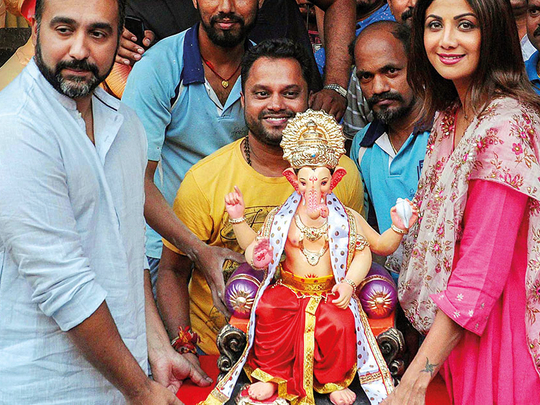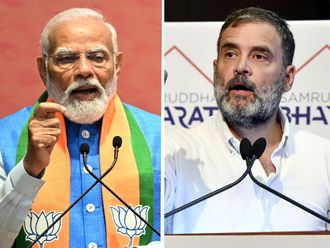
Mumbai: Despite high inflation and spiralling fuel prices, Maharashtra rolled out the red carpet for the popular elephant-headed deity, Ganesha as the state immersed itself in the 10-day long and biggest public festival on Thursday.
Around one million gigantic, big and small statues of Ganesha have reached the homes of the commoner people, celebrities, industrialists and politicians, housing complexes, waadis/waadas, private and public companies, besides the huge or gigantic ones at public marquees organized by Sarvajanik Ganeshotsav Mandals in Mumbai and all over the state.
In Mumbai, an estimated 300,000-plus big and small statues of Ganesha will be installed at private and public venues, and around a million across Maharashtra, said Naresh Dahibhavkar, President of the Brihanmumbai Sarvajanik Ganeshotsav Samanvay Samiti (BSGSS).
The day started with the ‘sthaapna pooja’ followed by traditional ‘aartis’ and chants of ‘Ganpati Bappa Morya’, as the fest started without plastic, thermocol decorations and other harmful materials, besides observing air, noise and water pollution norms.
Special prayer ceremonies were performed at various Ganesha Temples including the Siddhivinayak Temple in Dadar, Ganesh Mandir in Goregaon and Borivali, and the Ashthavinayak Temples in the state.
Mumbai has nearly 11,500 big-ticket Ganeshotsav associations with budgets of several crores of rupees, nearly 1,95,000 medium scale with budgets ranging from Rs5,00,000 to Rs5 million, and lakhs of individual households and other private organisers with small budgets.
“This year we are cutting corners without affecting the festivities, owing to the exorbitant petrol-diesel-gas prices, the spiralling inflation, GST effects and related factors,” Dahibhavkar told IANS.
“Flowers are five times costlier, sweets especially ‘modak’ are more than double, dry fruits cost even higher, lighting and decorations are also more expensive. We have raised these issues with Chief Minister Devendra Fadnavis, but there is no respite,” said Dahibhavkar.
The GSB Seva Mandal, Kings Circle, will unveil its 14.5 feet tall statue adorned with over 68 kgs of 22-carat gold and 327 kgs pure silver, besides expensive diamond-studded jewellery, mostly donated by devotees, making it the richest Ganpati celebrations marquee in the world attracting nearly a million visitors.
Other noteworthy installations include a 10-feet tall statue made entirely from e-waste and circuit boards at Korum Mall in Thane, a 5.2 feet tall paper quilting statue created by Bhagyashree Deshpande using over 40,000 coloured paper strips glued together by 4.25kg of Fevicol.
Thane social worker Umesh Thanawala has installed an 18.2-inch bronze statue showing Ganesha in Sardar Vallabhbhai Patel’s attire, modelled after the 182-metre tall Statue of Unity in Gujarat which will be inaugurated next month by Prime Minister Narendra Modi.
Around 100 students of Mount Litera IB School have made more than 100 ‘plantable clay Ganpatis’ which are implanted with seeds of different plants that will sprout after immersion.
Dahibhavkar said this year there will be more than 400 gigantic statues in public marquees adhering to the prescribed height limit of 18 feet, around 20,000 medium sized and the rest in small sizes in Mumbai.
Celebrations with tight budgets started in cities like Pune, Nagpur, Nashik, Kolhapur and coastal Konkan, where Ganeshotsav is the most important festival in the annual calendar, surpassing even Diwali.
The Maharashtra Tourism Development Corporation (MTDC) has made special arrangements for domestic and foreign tourists with special bus tours to important venues, walking trips, exclusive viewing galleries during immersion ceremonies and other activities for the next 10 days.
In the 126th year now, Ganeshotsav was launched on a modest scale by freedom fighter Lokmanya Bal Gangadhar Tilak in 1893, to rally the masses during the Independence movement.
It started before a small group of people in the congested Keshavji Nayak Chawl in Girgaum, south Mumbai, but later manifested into a full-fledged annual public fest in Maharashtra, many parts of India and abroad with members of all communities enthusiastically joining in.
Immersions of Ganesha statues will be taken up in phases on September 14, 15, 17, 19 with the grand send-off on September 23, the final day.












